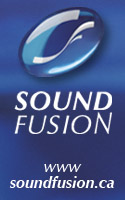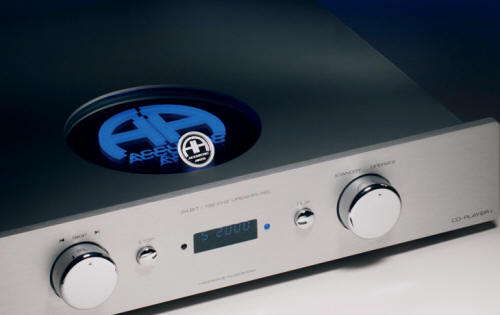
You are reading the older HTML site
Positive Feedback
ISSUE
28
accustic arts
CD Player 1 Mk 2
as reviewed by Danny Kaey

 |
|
|
You are reading the older HTML site
Positive Feedback
ISSUE
28
accustic arts CD Player 1 Mk 2 as reviewed by Danny Kaey
|
|
|
It would seem that there is a definitive shift regarding today's compact disc playback. On the one hand, SACD and DVD-A appear all but relegated to playing fifth fiddle, and on the other hand, a great number of digital designers are experimenting and releasing computer based (i.e. hard disk based) playback for the good ol' 16 bit Redbook standard—now almost 30 years of age. What is one to do? The typical "consumer" has all but given up on dedicated disc players, favoring such superb WiFi solutions as Slimdevices' Squeezebox or the Sonos system. Those consumers who wish to add another layer of refinement to the sound of these inexpensive playback solutions, can purchase various outboard DACs or have mods performed to the stock unit. All with great success might I add—all you have to do is search the various online forums for stories of musical bliss. Suffice it to say that this "new" technology is still somewhat in its infancy, and no doubt, we will see more practical "audiophile" solutions in the near future. Alas, "classic" disc players still command a relevant position, and in fact have now surpassed even the most exotic and super expensive multi-box disc players of recent time. One might even call it the "renaissance" of Redbook playback, especially considering the aforementioned, but 5th fiddle, SACD and DVD-A formats (to date I have amassed just under 40 SACDs, compared to about 800 Redbook discs). When I was offered the opportunity to review the latest Redbook creation from the German based company Accustic Arts (their official US distributor is Brian Ackerman at Aaudio), I simply could not refuse. Having seen and heard their offerings at various shows and at Brian's old headquarters (he has just recently moved to an all new 6000+ sq foot facility/home in Colorado), it brought to mind how much I like the brand, which manages to mix outstanding industrial design with solid sonics. The Accustic Arts CD Player 1 Mk 2 is a strikingly good-looking machine! The layout is simple, if Spartan, in comparison to some other players, offering all but four buttons on the beautifully machined front faceplate. Sitting in the middle of the faceplate is the display showing track and time info. The aluminum machined remote has all the remaining features needed to access the various playback options including a full 10-digit keypad to access individual tracks—a feature that, when it is not available, you sorely begin to miss. Foregoing a cheap and noisy plastic drawer mechanism, the Accustic Arts player employs Philips's top loading CDM Pro metal-based mechanism for superior disc management duties. Considering that many of today's top end disc players (Zanden, 47labs, Metronome, etc) use this same mechanism shows how serious Accustic Arts is about Redbook playback. You certainly do not find that level of refinement, machining, and bombastic quality on many 5 to $7k disc players (the Accustic Arts player retails for $7700). Even pricier players do not appear as well made as this German super player. The chassis itself is also all metal based with extensive shielding throughout the unit. There are no less than five separate power supplies in the disc player, one each for laser cueing, signal processing (DSP), display, display heating, and the D/A converters. The D/A converter is a 24bit/192khz enhanced multi-level Delta-Sigma (Burr Brown) with eight times oversampling. The rear panel offers the usual set of RCA and balanced (XLR) outputs as well as a set of AES/EBU and S/PDIF outputs for connecting to an external DAC (which Accustic Arts also makes). All other aspects of the design and implementation are as one would expect from such a high-quality product, making this player even somewhat of a bargain when compared spec for spec with other similarly priced high-end Redbook players. I saved the coolest feature for last, which is the actual disc loading compartment. Perhaps the most "strikingly" visual feature of the player is the glass sliding door, which features a laser etched "AA" logo being backlit by a visually stimulating cool blue light. Let us just say that late night listening sessions are something very special. A few months prior to receiving the AA player, I had a chance to audition Metronome's $22k digital monster in fellow PFO's Bob Levi's system. Compared to what Bob had available at the time (a fully modded Modwright 9000ES, Benchmark DAC, and an E.A.R. Acute player), the Metronome was overall the better sounding and more resolving Redbook player—it was scary good! While none of the other players where particular slouches, and in fact are superb disc players, the Metronome somehow managed to extract that much more info from Redbook, albeit at far greater a price point then the rest. Let us not kid ourselves; $22k is a TON of money for a disc player, and even more so considering that it only plays 16bit Redbook discs. How astonished I was then when I discovered that the most easily recognizable characteristic of the Accustic Arts player was its superb resolution! Even though I did not have the Metronome to compare it to, the Accustic Arts player managed to equal (more or less) the resolution of the $22k Metronome combo whilst offering a remarkably fluid, rhythmic, and engaging, though perhaps more forward, sound. That is, whereas the Metronome appeared to move the soundstage back a few yards, the Accustic Arts player presented the venue from a more forward position, whilst still giving you what appears to be endless amounts of "back space" and sound stage dimensionality. Varese 's "Ionization" track off the two disc Decca set certainly sets expectations very high in more than one way. First, it is an extremely dynamic recording; second, it offers a full bird's eye perspective of the recording venue giving you a three dimensional view of the recording hall. With lesser players, this track can sound dynamically limited and space constricted—not so with the Accustic Arts player. Here you hear a near perfect presentation of both macro—and micro-dynamic swings as well as experiencing the full bird's eye view of the orchestra. What struck me most about the Metronome was its razor sharp imaging, focus, and resolving power of individual instruments. Even so, these were easily replicated by the Accustic Arts player on disc after disc. I recently received the Zu Definition loudspeakers for review. With the otherwise mighty Velodyne DD-15 notwithstanding, the Definitions are the widest range loudspeakers I have ever had in my music room, measuring flat to 16Hz. You will never hear the "definition" of 16Hz unless you have a source capable of playing and outputting serious bass—like that of the Accustic Arts player. Bass through the AA player is remarkably well done. Case in point, my various dub, lounge, and reggae discs I have amassed over the years. Boozoo Bajou's debut album, Satta contains exactly that type of material on which the AA player simply shines and outclasses all other digital players I have heard to date. Bass is tight, deep, and fully controlled without ever smearing or slowing down the tempo. You get the thwacks and pant flaps reminiscent of my analog Brinkmann LaGrange/E.A.R. 324 setup (the best I have heard at this). Simply astounding what the AA folks have done here. Switching gear to more soothing music—Johnny Cash's American V album—the Accustic Arts player continues to shine with its razor sharp imaging, yet it also shines with a delicate ability to outline the acoustic landscape of Cash and his remarkable voice. The only area where I could perhaps critique the player is in its slightly cooler then neutral overall voicing—something that becomes clearly evident through the utter neutrality of the associated Kubala-Sosna Emotion line of interconnects, power cords, and speakers cables. Swapping the AA player out for the half-the-price Naim CD 5x player confirms that point by bringing forth the Naim's decidedly warmer, if perhaps too syrupy, sonic signature. Clearly, I prefer the more Teutonic and straight forward nature of the Accustic Arts player, even if it means that some of the emotional sweetness is missing. Much like loudspeakers, amplifiers and such, it all comes down to personal subjective preferences—simply put I like the sonic character of the Accustic Arts player! It seems that we are nearing the end of classic compact disc development—the latest advances have undoubtedly taken Redbook playback to whole new levels, which if attainable even a few short years ago, would have cost multiples of the AA player's asking price. I personally believe that the next great advances in digital playback will come from some form of hard disk based music servers—as are now appearing on the horizon. Perhaps now is not the best time to spend money on the latest and greatest advances in single box players—like the Accustic Arts. However, if you do, you will have future proofed yourself by owning one of the finest Redbook players on the market. Danny Kaey
CD Player Mk 2
Accustic Arts US Distributor
Aaudio Imports
|